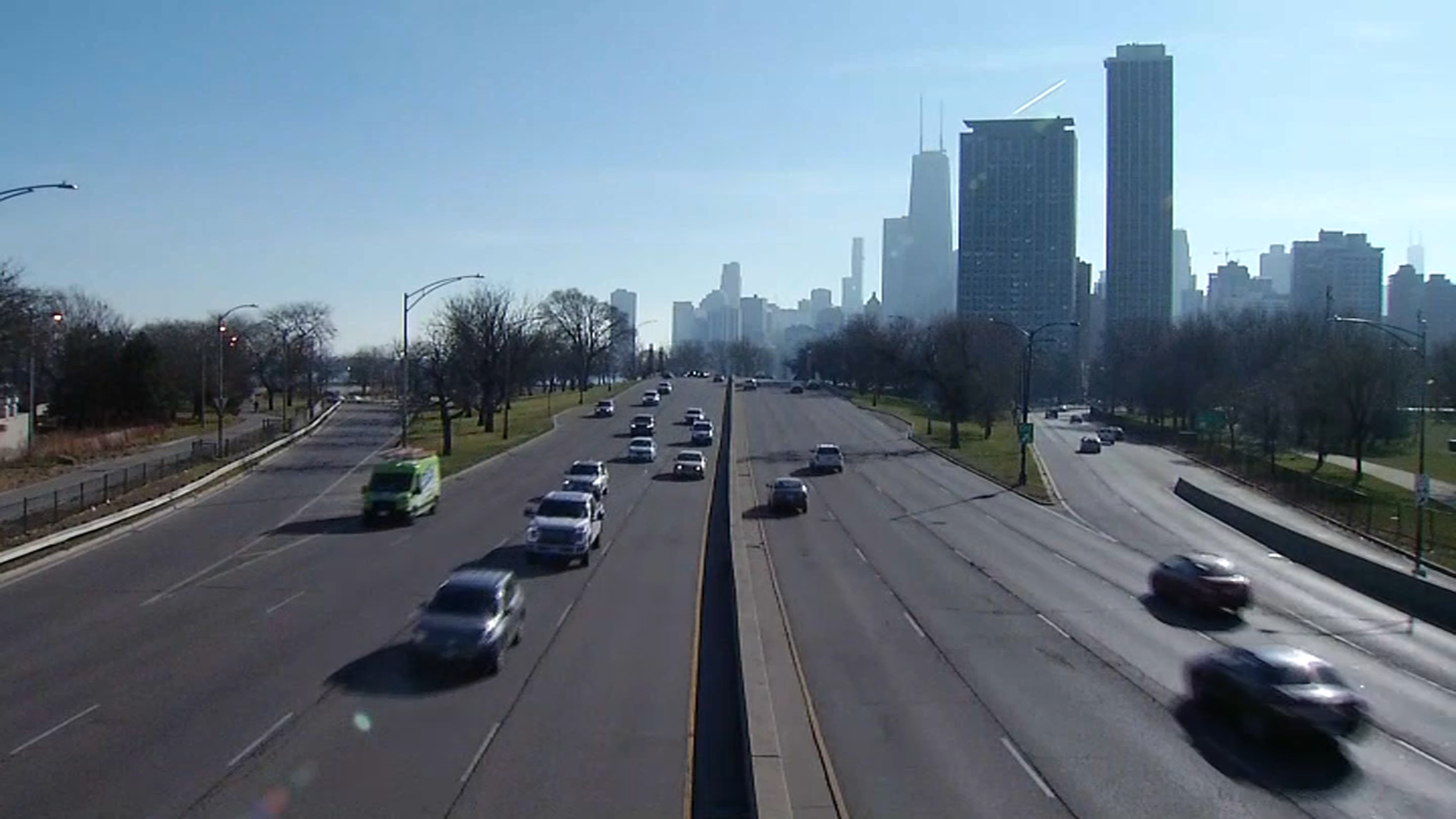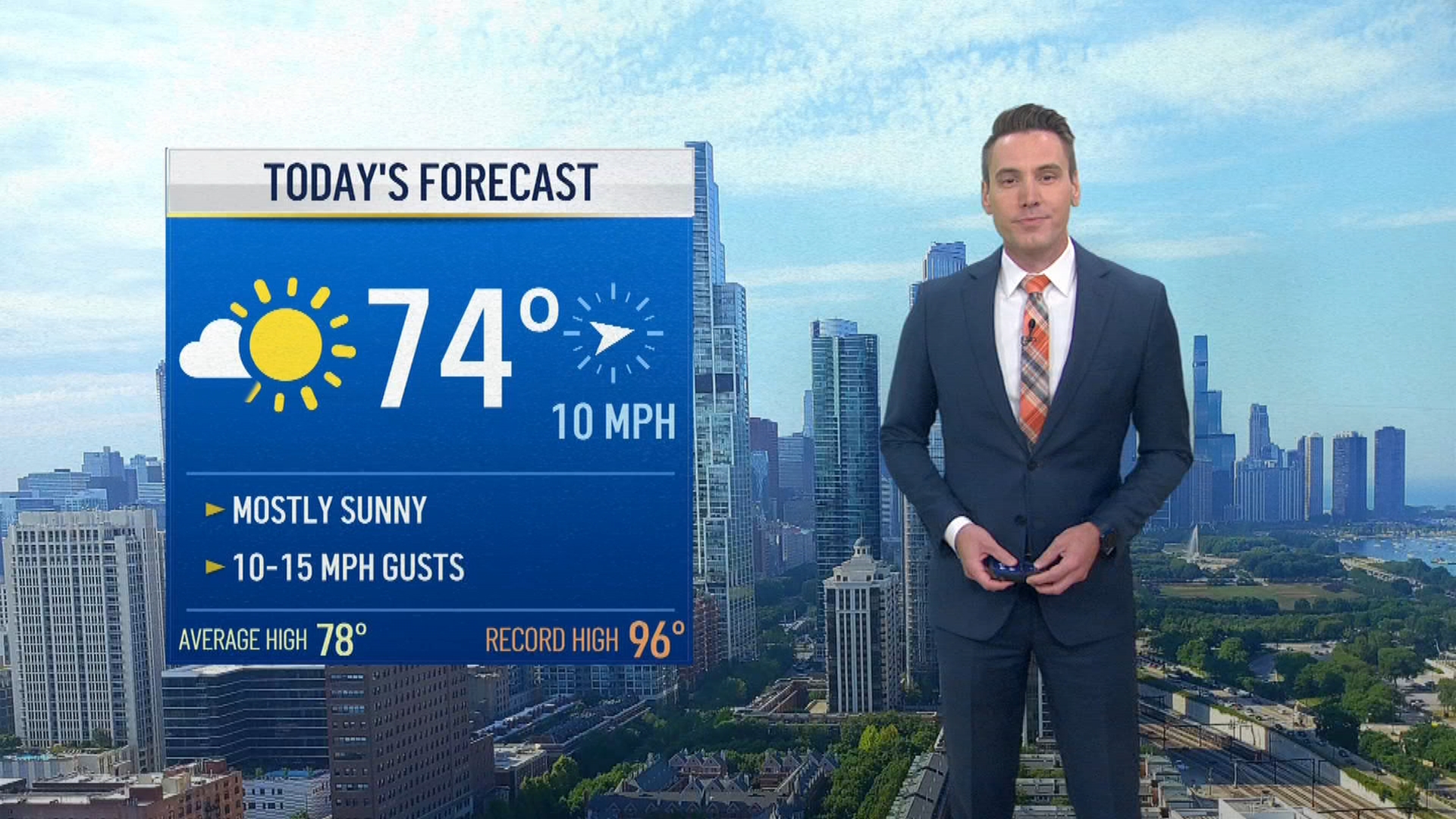Hazy, sepia-toned skies from nearly 150 Canadian wildfires are hovering over at least 16 states including Illinois, disrupting daily life and creating hazardous air quality conditions for some. And according to experts, that might not be changing anytime soon.
The weather system that’s driving the great Canadian-American smoke out — a low-pressure system over Maine and Nova Scotia — “will probably be hanging around at least for the next few days,” U.S. National Weather Service meteorologist Bryan Ramsey said.
“Conditions are likely to remain unhealthy, at least until the wind direction changes or the fires get put out,” Ramsey said. “Since the fires are raging — they’re really large — they’re probably going to continue for weeks. But it’s really just going be all about the wind shift.”
Across the eastern U.S., officials warned residents to stay inside and limit or avoid outdoor activities again Thursday, extending “Code Red” air quality alerts in some places for a third-straight day as forecasts showed winds continuing to push smoke-filled air south.
Wednesday, federal officials paused some flights bound for New York’s LaGuardia Airport and slowed planes to Newark and Philadelphia because smoke was limiting visibility. Thursday morning, the Federal Aviation Association issued a ground stop at LaGuardia for incoming flights due to "weather, low visibility."
In the Chicago area, high ozone levels, combined with smoke from wildfires led to air quality alerts and hazy skies Monday. By Wednesday, the smoke across the city and the suburbs had reduced from a thick to a moderate level.
Thursday, the smoke level teetered higher, a map of smoke and wildfires from NOAA shows.
Local
How dangerous is it?
The U.S. Environmental Protection Agency said hazy skies, reduced visibility and the odor of burning wood are likely, and that the smoke will linger for a few days in northern states.
Feeling out of the loop? We'll catch you up on the Chicago news you need to know. Sign up for the weekly Chicago Catch-Up newsletter.
“It's not unusual for us to get fire smoke in our area. It's very typical in terms of northwest Canada,” said Darren Austin, a meteorologist and senior air quality specialist with the Rhode Island Department of Environmental Management. But, usually, the smoke has been aloft and hasn't affected people's health, he said.
Air quality alerts are triggered by a number of factors, including the detection of fine-particle pollution — known as “PM 2.5” — which can irritate the lungs.
“We have defenses in our upper airway to trap larger particles and prevent them from getting down into the lungs. These are sort of the right size to get past those defenses,” said Dr. David Hill, a pulmonologist in Waterbury, Connecticut, and a member of the American Lung Association's National Board of Directors. “When those particles get down into the respiratory space, they cause the body to have an inflammatory reaction to them.”
Trent Ford, the state climatologist in Illinois, said the atmospheric conditions in the upper Midwest creating dry, warm weather made it possible for small particulates to travel hundreds of miles from the Canadian wildfires and linger for days.
“It’s a good example of how complex the climate system is but also how connected it is,” Ford said.
Exposure to elevated fine particle pollution levels can affect the lungs and heart.
The air quality alerts caution “sensitive groups,” a big category that includes children, older adults, and people with lung diseases, such as asthma and chronic obstructive pulmonary disease.
Kids, who often are encouraged to go out and play, “are more susceptible to smoke for a number of reasons,” said Laura Kate Bender, the lung association's National Assistant Vice President, healthy air. “Their lungs are still developing, they breathe in more air per unit of body weight.”
How to check the air quality near you
Air quality is monitored using a number of factors, which determine an "air quality index" that the Environmental Protection Agency then uses.
"The higher the AQI value, the greater the level of air pollution and the greater the health concern," according to AirNow, where the index is reported. "For example, an AQI value of 50 or below represents good air quality, while an AQI value over 300 represents hazardous air quality."
Values above 100 are considered unhealthy, particularly for sensitive groups of people. But as the levels rise, so does the risk.
According to air quality monitor AirNow, the air quality in Chicago as of Thursday is moderate, which ranks at level two on a six level scale.
The moderate ranking, AirNow says, describes air quality as "acceptable." "However, there may be a risk for some people, particularly those who are unusually sensitive to air pollution," the site goes on to say.
To the east in Indiana, the levels are even worse. "Poor air quality is expected today in Indiana, primarily due to lingering wildfire smoke in the area," a tweet from the National Weather Service said early Thursday. "Those with chronic respiratory illnesses should limit their time outdoors.
You can check the air quality levels for your area using this online interactive map.
To the east in Indiana, the levels are even worse. "Poor air quality is expected today in Indiana, primarily due to lingering wildfire smoke in the area," a tweet from the National Weather Service said early Thursday. "Those with chronic respiratory illnesses should limit their time outdoors.
Where are the wildfires burning?
149 of wildfires are burning across western provinces to Quebec, with 110 of them out of control.
The Quebec-area fires are big and relatively close, about 500 to 600 miles (roughly 800 to 970 kilometers) away from Rhode Island and close to 1,000 miles from Chicago. And they followed wildfires in Nova Scotia, which resulted in a short-lived air quality alert on May 30.
Canadian officials say this is shaping up to be the country’s worst wildfire season ever. It started early on drier-than-usual ground and accelerated quickly. Smoke from the blazes has been lapping into the U.S. since last month but intensified with recent fires in Quebec, where about 100 were considered out of control Wednesday.
“I can taste the air,” Dr. Ken Strumpf said in a Facebook post from Syracuse, New York, where the sky took on the colorful nickname of the local university: Orange.
The smoke was so thick in Canada’s capital, Ottawa, that office towers just across the Ottawa River were barely visible. In Toronto, Yili Ma said her hiking group canceled a planned hike this week, and she was forgoing the restaurant patios that are a beloved summer tradition in a nation known for hard winters.
“I put my mask away for over a year, and now I’m putting on my mask since yesterday,” Ma lamented.
Eastern Quebec got some rain Wednesday, but Montreal-based Environment Canada meteorologist Simon Legault said no significant rain is expected for days in the remote areas of central Quebec where the wildfires are more intense.
Why is smoke reaching so far away?
Strong winds high up in the atmosphere can transport smoke long distances and it’s common for large, violent fires to create unhealthy conditions hundreds of miles away from where forests are burning.
But the right mix of circumstances had to align for the smoke to blanket major U.S. cities: A dry, hot spring set the stage. Then weather did the rest, said Bob Henson, meteorologist with Yale Climate Change Connections.
In Canada, air is circulating counterclockwise around a low pressure system near Nova Scotia. That sends air south over the fires in Quebec. There the air picks up smoke, and then turns east over New York state, carrying smoke to the eastern seaboard.
“It’s a simple matter of trajectory,” Henson said. “The smoke goes where the wind takes it.”
This wind pattern isn’t particularly rare. But the confluence of events is.
“The timing of this weather patterns is unfortunately overlapping with a situation that was ripe for large fires,” Thornton said.
Weather patterns change and the worst conditions should only last a day or two. Some smoke, however, could linger for a week or more, according to experts.
Genesis of the smoke
Unusually hot, dry weather that wouldn’t stop gave rise to the wildfires.
“The month of May was just off the charts — record warm in much of Canada,” said Eric James, a modeling expert with the Cooperative Institute for Research in Environmental Science at the University of Colorado, who is also with the National Oceanic and Atmospheric Administration.
A warming planet will produce hotter and longer heat waves, making for bigger, smokier fires, according to Joel Thornton, professor and chair of the department of atmospheric sciences at the University of Washington.
The Quebec-area fires are big and relatively close, about 500 to 600 miles (roughly 800 to 970 kilometers) from Rhode Island and they followed wildfires in Nova Scotia.
“I don’t remember fires of this scale in the last 10 years,” James said of the Quebec blazes.
Smoke from fires in western Canada have been drifting into the United States for weeks. But it’s recent fires in Quebec that have produced the dangerous east coast haze.



